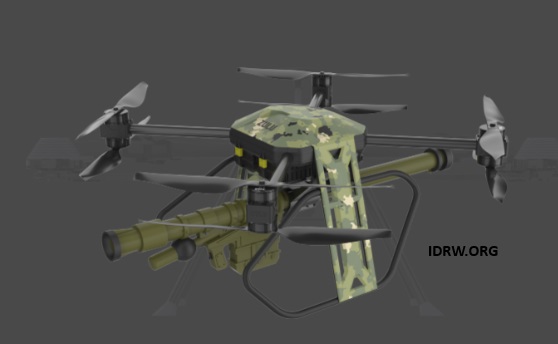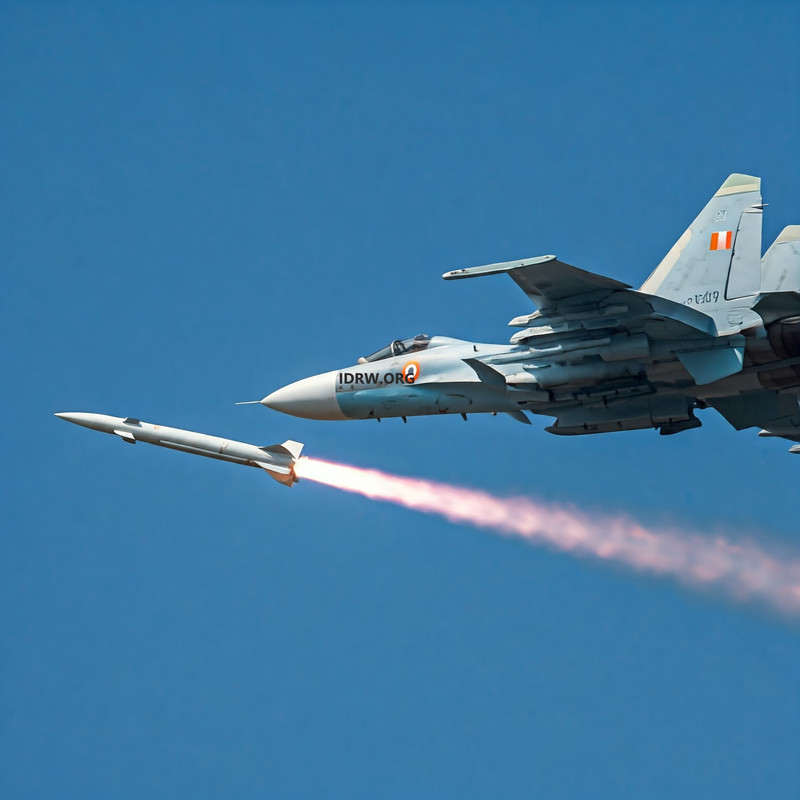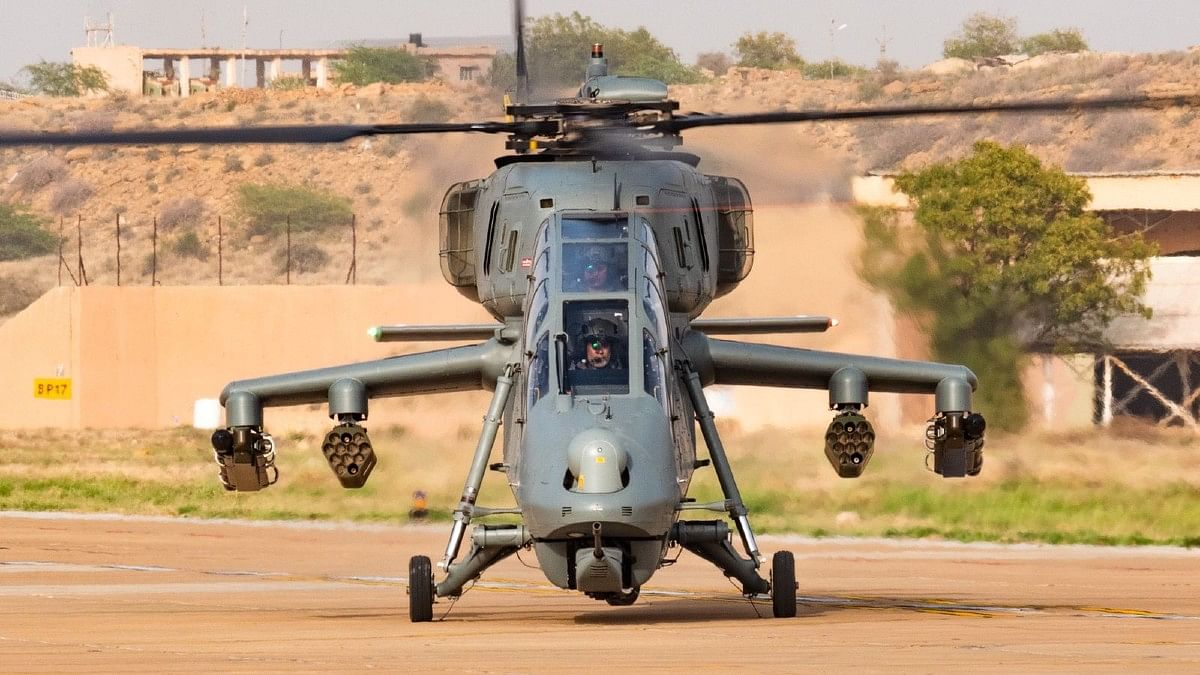SOURCE: AFI

In a recent interview with News9 Plus, former Air Chief Marshal R.K.S. Bhadauria highlighted a crucial aspect of India’s Advanced Medium Combat Aircraft (AMCA) program: the development of a new, powerful engine for the AMCA Mk II. Bhadauria stressed that the engine development should be a top priority to avoid delays, considering its critical importance in ensuring the program’s success.
The AMCA program, designed to propel India into the 5th generation fighter jet arena, received Cabinet Committee on Security (CCS) clearance earlier this year. This was a major milestone, signaling the government’s commitment to the project and unlocking essential funds to accelerate its development. With the AMCA Mk I expected to feature an upgraded GE F414 engine and the Mk II to incorporate an indigenously developed 110kN thrust engine in collaboration with a foreign aerospace major, Bhadauria highlighted the urgency in addressing this area.
Continue readingSOURCE: AFI

Tata Advanced Materials Limited (TAML) is set to participate in the Indian Army’s prestigious Futuristic Infantry Combat Vehicle (FICV) program, aimed at replacing the aging fleet of BMP-II Infantry Fighting Vehicles (IFVs). As one of the key players in India’s defense manufacturing ecosystem, Tata plans to offer a cutting-edge solution that leverages its experience in armored vehicles. Central to Tata’s offering will be the integration of the same 600-horsepower (Hp) Cummins engine, paired with the Allison automatic transmission, currently used in its Wheeled Armoured Platform (WhAP).
The Indian Army has been operating BMP-II vehicles since the 1980s, and while they have seen several upgrades over the years, they are now outdated in terms of protection, firepower, and mobility. The FICV program, which seeks to replace over 2,600 BMP-IIs, is a critical step toward modernizing India’s armored infantry capabilities. The new FICV will be expected to operate across various terrains, from plains and deserts to high-altitude regions like Ladakh, making mobility and versatility essential factors in the design.
Continue readingSOURCE: AFI

Apollo Micro Systems (AMS), a Hyderabad-based defense and aerospace company, has been declared the Lowest Bidder (L1) for a significant contract valued at Rs. 28.74 crores from Bharat Electronics Limited (BEL) and CNA (OF) Pune, under the aegis of the Indian Navy. The contract is for the supply of Software Defined Universal Homing System (SDUHS) for Heavy Weight Torpedoes, a cutting-edge technology developed in collaboration with the Defence Research and Development Organisation (DRDO).
The Software Defined Universal Homing System is a sophisticated piece of technology designed for heavyweight torpedoes used in naval warfare. Torpedoes are underwater weapons critical for naval operations, and the homing system acts as the “brain” of the torpedo, enabling it to locate and track enemy submarines and surface vessels accurately.
Continue readingSOURCE: AFI

In a significant boost to India’s submarine manufacturing capabilities, Mazagon Dock Shipbuilders Limited (MDL), a state-owned shipyard, has successfully indigenized the Battery Loading Trolley for submarines in collaboration with M/s SEC Industries, Hyderabad.
Previously, this crucial equipment, essential for loading submarine batteries in the battery compartment, was imported. However, MDL’s partnership with M/s SEC Industries has led to the development of a domestic solution, ensuring self-reliance and reducing dependency on foreign imports.
Continue readingSOURCE: IDRW.ORG.

Bengaluru-based startup Zulu Defence Systems is making waves in the defense sector with its cutting-edge development, VOLUME35, a weaponized Unmanned Aerial System (UAS) platform. The VOLUME35 is a game-changer for air defense in India, with the ability to carry and launch the highly effective Igla-S shoulder-fired anti-aircraft missiles. This innovative UAS platform could significantly enhance India’s air defense capabilities, offering unmatched mobility, flexibility, and rapid deployment in combating enemy aerial threats.
The Igla-S is a man-portable air defense system (MANPADS) designed for targeting and neutralizing low-flying enemy aircraft, helicopters, and drones. This Russian-made system is known for its effectiveness, precision, and ease of use, and has been widely adopted by military forces around the world.
Continue readingSOURCE: IDRW.ORG.

Sagar Defence Engineering Pvt. Ltd. has been declared the winner of the iDEX ADITI 1.0 Challenge for its Two-Man Tactical Aerial Vehicle (TM-TAV) specifically designed for High-Altitude (HA) operations. This novel aircraft falls under the category of Personal Aerial Vehicles (PAVs) and utilizes electric Vertical Take-Off and Landing (eVTOL) technology.
The Two-Man Tactical Aerial Vehicle represents the culmination of advancements in electric vertical take-off and landing (eVTOL) technology, ushering in a new era of human-sized manned vehicles tailored for high-altitude operations. Equipped with a spacious cabin/cockpit capable of accommodating a pilot and additional payload, this innovative platform offers unparalleled versatility and performance.
Continue readingSOURCE: AFI

In a recent interview with News9 Plus, former Air Chief Marshal R.K.S. Bhadauria shared his vision for the Indian Air Force (IAF) over the next 20 years, outlining a roadmap that includes a significant shift in the fleet composition. Central to his vision is the eventual retirement of the older Su-30MKI fighter jets, which were first inducted in 2001, and the rise of the Advanced Medium Combat Aircraft (AMCA) Mk II, India’s indigenous 5.5 generation stealth fighter.
According to idrw.org, the IAF is expected to start retiring nearly 100 Su-30MKIs from around 2045 onwards, focusing on the early variants inducted in the early 2000s. By this time, the AMCA Mk II production will have reached full swing, with at least 4-5 squadrons of the stealth aircraft already operational.
Continue readingSOURCE: AFI

The Advanced Systems Laboratory (ASL) in Hyderabad has achieved a significant breakthrough in composite materials technology. They have developed a new fabrication process for creating composite components with exceptional properties, including low density, high insulation capability, and broadband microwave absorption.
The primary application for this composite is as an insulation liner behind airframes. By providing both insulation and radar absorption, it enhances the overall performance and stealth of aircraft.
Continue readingSOURCE: AFI

In a significant leap forward for India’s self-reliance in defense technology, Valdel Advanced Technologies Pvt. Ltd. (VATPL) has successfully developed watertight, gas-tight, and fire-class compliant doors and hatches for Indian Naval vessels. This achievement, backed by the Defence Research and Development Organisation’s (DRDO) Technology Development Fund (TDF), marks a major boost to the nation’s indigenous defense capabilities.
This achievement marks a major boost to India’s indigenous defense capabilities. Previously, these critical components were sourced from external suppliers. Now, with Valdel AT’s innovation, India takes a significant step towards self-sufficiency in this essential area.
Continue readingSOURCE: AFI

In a recent inflammatory video, Gurpatwant Singh Pannun, a known Khalistani terrorist and the General Counsel of the banned group Sikhs for Justice (SFJ), made controversial remarks, claiming that the Indian state of Arunachal Pradesh is “the territory of China.” In his latest rant, Pannun urged Chinese President Xi Jinping to reclaim the northeastern Indian state, calling for immediate military action. “Now is the time to order the Chinese army to take Arunachal Pradesh back,” Pannun declared, stirring controversy and outrage in India.
Gurpatwant Singh Pannun has long been a vocal proponent of Khalistan, a separatist movement seeking the creation of an independent Sikh state. His organization, Sikhs for Justice (SFJ), has been at the forefront of pushing for the secession of Punjab from India, which has led to his designation as a terrorist by the Indian government in 2020 under the Unlawful Activities (Prevention) Act (UAPA).
Continue readingSOURCE: RAUNAK KUNDE / NEWS BEAT / IDRW.ORG

India’s nuclear attack submarine program recently received Cabinet Committee on Security (CCS) approval for the construction of two nuclear-powered attack submarines (SSNs), a critical step forward in strengthening India’s maritime defence capabilities. New details, as reported by the Times of India (TOI), suggest that these submarines will have a displacement of nearly 10,000 tons, significantly larger than previously speculated figures of 6,000-7,000 tons.
The increased displacement of India’s nuclear attack submarines places them in the same league as the American Virginia-class submarines, specifically the SSN-774 Block V variant, which displaces around 10,200 tons. This would make India’s SSNs comparable to some of the most advanced nuclear attack submarines (SSNs) in the world in terms of size and potential capability.
Continue readingSOURCE: RAUNAK KUNDE / NEWS BEAT / IDRW.ORG

In response to the Indian Air Force’s (IAF) call for expedited development, the Defence Research and Development Organisation (DRDO) is set to commence initial trials of the Air-Launched Long Range Land Attack Cruise Missile (ALLCM) program from 2025 onwards.
The ALLCM, based on the subsonic cruise missile designed and developed by the Aeronautical Development Establishment (ADE) for the Indian Army, will be launched from IAF’s Sukhoi-30MKI jets. The IAF variant will be approximately 1.3 tons lighter due to the removal of the first-stage solid rocket booster.
Continue readingSOURCE: RAUNAK KUNDE / NEWS BEAT / IDRW.ORG

The exit of German Chancellor Angela Merkel in 2021 paved the way for ThyssenKrupp Marine Systems (TKMS) to make a strong comeback in India’s prestigious P75I submarine project.
During Angela Merkel’s 16-year tenure as Chancellor, TKMS, despite being a frontrunner for India’s P75I submarine project, faced several obstacles. These challenges included stringent export controls and high demands for technology transfer (ToT) from the Indian Navy. TKMS raised concerns that some of the requirements, such as the high indigenous content percentage and almost unlimited liability for the foreign technology partner, were nearly impossible to meet.
Continue readingSOURCE: AFI

The use of armed drones and Remotely Piloted Vehicles (RPVs) in contemporary conflicts, particularly in Ukraine and the Middle East, has significantly reshaped the battlefield landscape. These unmanned systems have demonstrated their ability to overcome traditional anti-aircraft defenses and even advanced Surface-to-Air Missile (SAM) systems. The success of drones in penetrating air defenses highlights the urgent need for developing innovative strategies to counter these evolving threats. As future conflicts will likely see a surge in the use of armed drones and RPVs, defense forces worldwide must adapt and prepare. For India, the Light Combat Helicopter (LCH), indigenously developed by Hindustan Aeronautics Limited (HAL), presents a promising solution for countering drone threats.
Recent conflicts in Ukraine and the Middle East have underscored the transformational impact of armed drones on warfare. These drones, often small and agile, have been able to evade traditional defense systems and deliver precision strikes on high-value targets. RPVs are increasingly being used for reconnaissance, artillery spotting, and airstrikes, rendering them a vital component of modern warfare.
Continue readingSOURCE: AFI

Recent footage of China’s ZTQ-15 light tanks reveals a significant upgrade in their protection systems, as the tanks are now equipped with large, cage-like “grills” that cover the front, sides, top, and rear of the vehicle. This extensive protection extends to critical components such as the engine, transmission compartments, and partially the external fuel tanks. These enhancements come at a time when India is increasing its focus on kamikaze drones and loitering ammunition, possibly signaling that China is responding to this emerging threat along the Line of Actual Control (LAC).
The ZTQ-15, also known as the Type 15, is designed for operations in rugged terrain like mountains and jungles, making it particularly suited for deployment in areas like the LAC, where the landscape poses significant challenges for heavier armored vehicles. First showcased publicly in 2016, this light tank features a 105mm gun capable of firing both traditional rounds and guided missiles, giving it substantial firepower despite its relatively lighter design compared to main battle tanks.
Continue reading